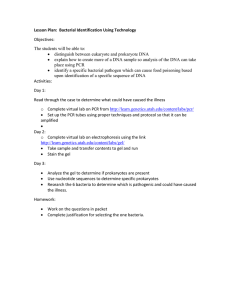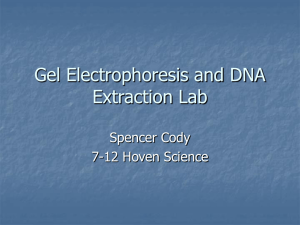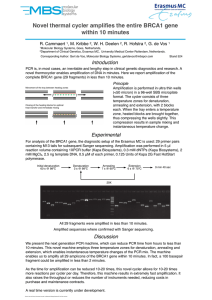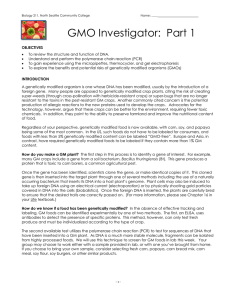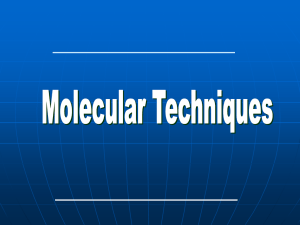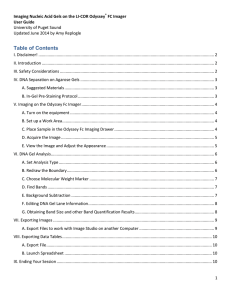BIOTC 460 Lab Quiz 1
advertisement
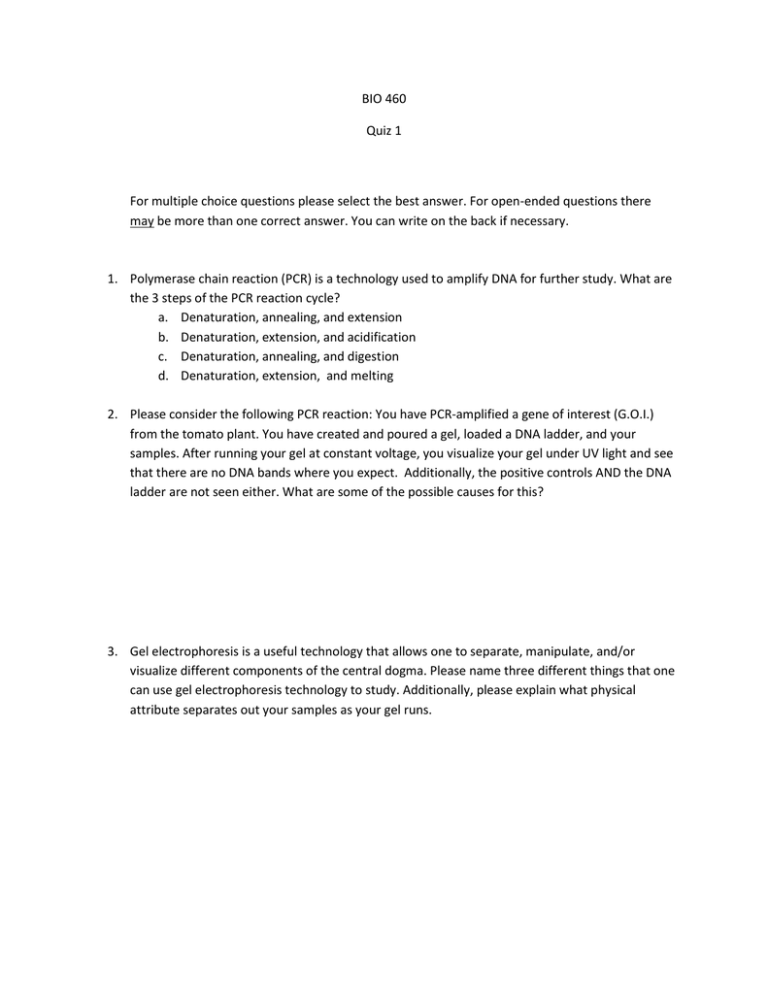
BIO 460 Quiz 1 For multiple choice questions please select the best answer. For open-ended questions there may be more than one correct answer. You can write on the back if necessary. 1. Polymerase chain reaction (PCR) is a technology used to amplify DNA for further study. What are the 3 steps of the PCR reaction cycle? a. Denaturation, annealing, and extension b. Denaturation, extension, and acidification c. Denaturation, annealing, and digestion d. Denaturation, extension, and melting 2. Please consider the following PCR reaction: You have PCR-amplified a gene of interest (G.O.I.) from the tomato plant. You have created and poured a gel, loaded a DNA ladder, and your samples. After running your gel at constant voltage, you visualize your gel under UV light and see that there are no DNA bands where you expect. Additionally, the positive controls AND the DNA ladder are not seen either. What are some of the possible causes for this? 3. Gel electrophoresis is a useful technology that allows one to separate, manipulate, and/or visualize different components of the central dogma. Please name three different things that one can use gel electrophoresis technology to study. Additionally, please explain what physical attribute separates out your samples as your gel runs. 4. Which enzyme(s) is responsible for “glue-ing” together two separate pieces of DNA with similar sticky ends when making recombinant DNA? a. Restriction enzymes b. Ligases c. Phosphatases d. Taq polymerase 5. Why do farmers grow transgenic crops? 6. Please list 2-3 reasons why genetically engineered crops are not universally grown and accepted. 7. Which is NOT a developmental stage of tissue culture? a. Transfer to natural environment b. Proliferation of axillary shoots c. Establishment of aseptic cultures d. Pretransplating (rooting) e. Addition of cytokines/auxins 8. Please explain the difference between embryogenesis and totipotency. 9. What is the preferred carbohydrate in plant cell culture media? a. Lactose b. Sucrose c. Starch d. Maltose e. Sorbitol 10. When selecting and cutting a donor plant tissue, why is it important to collect your sample prior to plant flowering?

